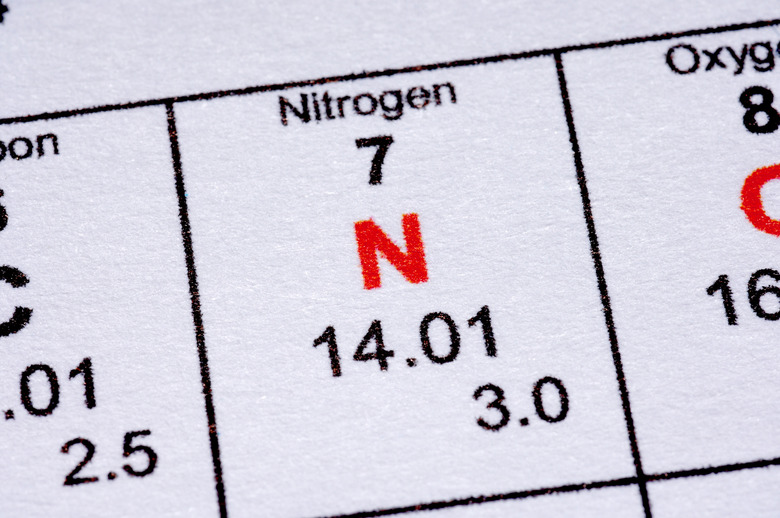What Is The Highest Possible Oxidation Number Of Nitrogen?
An oxidation number in chemistry refers to the state of an element — such as nitrogen — in a compound when it either loses or gains an electron. This number corresponds to the lost or gained electrons, in which each loss of an electron raises the oxidation state of that substance by one. Likewise, each addition of an electron lowers the oxidation state — and number — by one and is known as a reduction.
Oxidation States of Nitrogen
Oxidation States of Nitrogen
Depending upon the compound, nitrogen can have an oxidation number as low as -3 or as high as +5. An example of a +5 nitrogen compound is nitric acid, which is used in the manufacturing of explosives, fertilizers and even rocket fuels. Nitrates also have oxidation numbers of +5. Examples of nitrates are sodium nitrate, potassium nitrate and silver nitrate.
Cite This Article
MLA
Cascio, Christopher. "What Is The Highest Possible Oxidation Number Of Nitrogen?" sciencing.com, https://www.sciencing.com/highest-possible-oxidation-number-nitrogen-12771/. 24 April 2017.
APA
Cascio, Christopher. (2017, April 24). What Is The Highest Possible Oxidation Number Of Nitrogen?. sciencing.com. Retrieved from https://www.sciencing.com/highest-possible-oxidation-number-nitrogen-12771/
Chicago
Cascio, Christopher. What Is The Highest Possible Oxidation Number Of Nitrogen? last modified March 24, 2022. https://www.sciencing.com/highest-possible-oxidation-number-nitrogen-12771/
